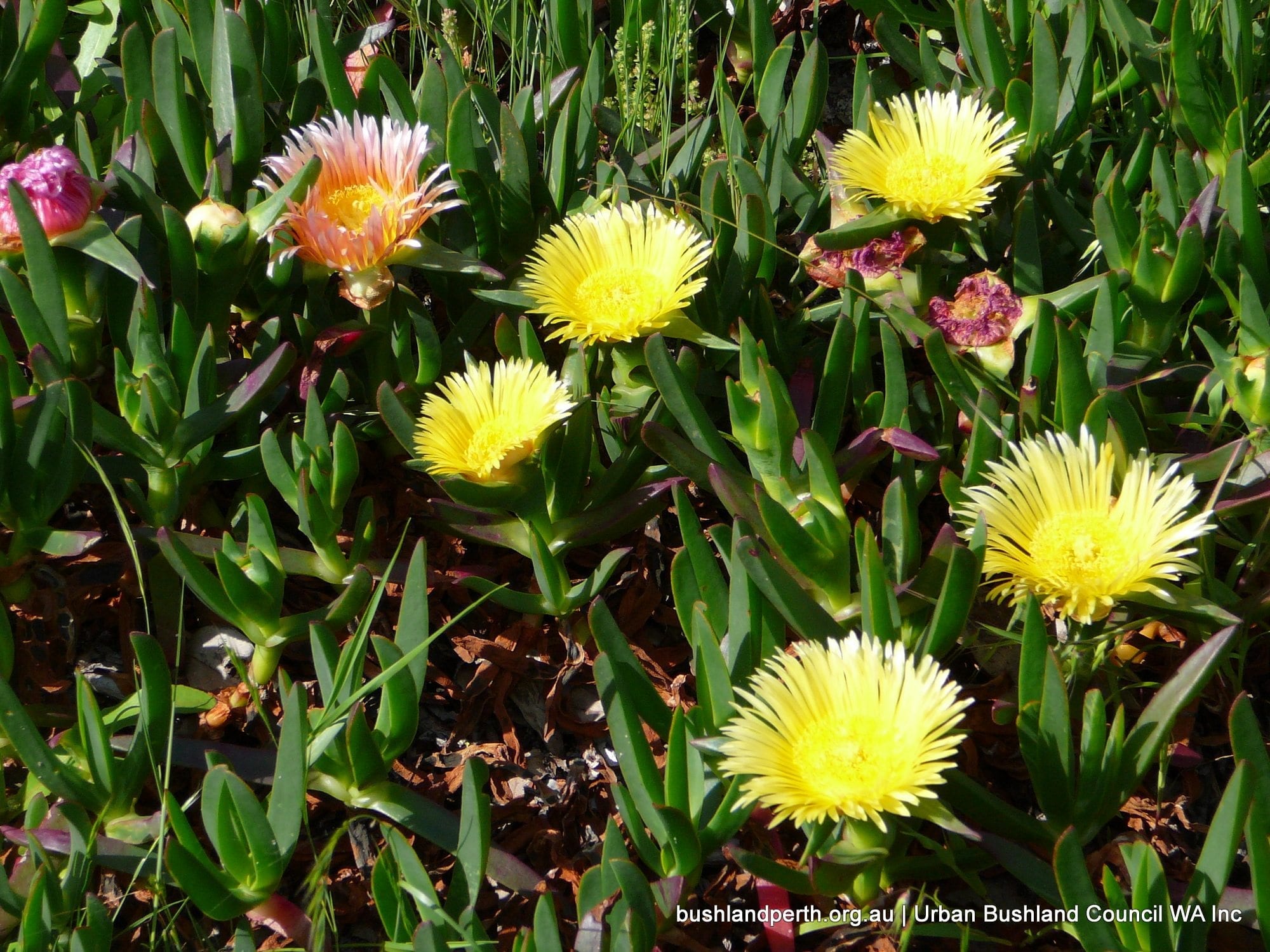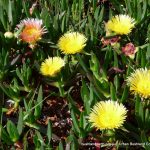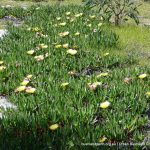Pigface or Hottentot Fig

Common name
Pigface or Hottentot Fig
Scientific Name
Carpobrotus edulis
Type of plant
Uncategorised
About this weed
This weed is a short-lived spreading perennial originally native to South Africa but now common in coastal bushland. Pigface was introduced as an ornamental plant, for erosion control, medicines and food. This weed should not be confused with the native species of Carpobrotus. Florabase has 5 native species, some of which are Declared Rare. If in doubt seek confirmation before removing any plants.
Description
This spreading, prostrate weed may have branches up to 2 metres in length and it can be identified by the triangular succulent leaves up to 14 cm long. The flowers open yellow but age to pink. Flowers are monoecious (both male and female parts) and will only open in the afternoon. Flowers are pollinated by bees and beetles. Established plants are highly drought, wind and salt spray resistant. The plant produces fleshy indehiscent fruit in spring and summer which remains on the plant until autumn when it is eaten and dispersed by a variety of mammals. It has high vegetative reproduction rates. It can establish from fresh or significantly dehydrated small stem fragments. It can hybridise with related native and naturalised species. Pigface is moderately fire-retardant and relies upon disturbance such as fire to open up vegetative cover.
Impact on Bushland
This species has naturalised in many parts of the world and is invasive primarily in coastal habitats. It can have strong negative effects on the germination, survival, growth, and reproduction of other species. Pigface is capable of directly smothering native flora, suppressing regeneration, outcompeting and/or hybridising with native Carpobrotus species. It forms impenetrable mats that break down over time, increasing soil organic matter and altering nutrient dynamics, allowing new non-native species to invade. Its dense fibrous root systems interfere with water uptake by other plants and also capable of reducing soil pH. The natural processes in dune environments many be hindered because the plant can prevent sand movement. Once established it is competitively superior to native species particularly grasses and herbs. Capable of directly smothering native flora, suppressing regeneration, outcompeting and/or hybridising with native Carpobrotus species.
Location
Often seen growing on coastal dunes and heath and winter-wet depressions of the South-West Province and Swan Coastal Plain. Pigface grows mainly on white or grey sand or sandy clay.
Priority for removal
High: a major threat to conservation values anywhere it has taken hold.
Management (hand)
Manual methods appear to be the most effective means of control. Roll up large mats removing all roots and stem fragments and remove from site. Follow up with removal of any germinating plants. When removing this weed from urban bushland care needs to be taken to remove all parts of the plant as stem fragments can regrow. Manually remove any month but be careful that you are removing this weed and no a native species.
Management (herbicide)
Spray with Glyphosate at 2% + surfactant. Read the manufacturers’ labels and material safety data sheets before using herbicides.Optimal spraying months are June to October.
Flowering month/s
September, October, November
Flower colour/s
Yellow, Pink
Information source
https://florabase.dpaw.wa.gov.au/browse/profile/2795
Additional information
https://florabase.dpaw.wa.gov.au/weeds/swanweeds/
Hussey, B.M.J., Keighery, G.J., Dodd, J., Lloyd, S.G. and Cousens, R.D. (2007) Western weeds. A guide to the weeds of Western Australia, Second Edition, The Weeds Society of Western Australia, Victoria Park, Western Australia.


